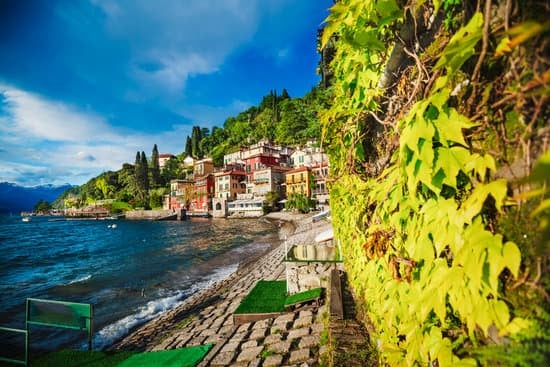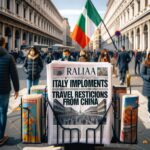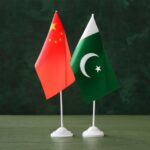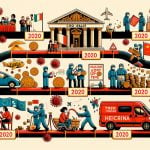Marco Polo, the renowned traveler and explorer, embarked on an epic journey from Italy to China that would forever shape the world of exploration. This article delves into the fascinating tale of how Marco Polo traveled from Italy to China, highlighting the intrigue and allure that surrounded his expedition. From his early life and influences to his years of exploration in China, we will explore the remarkable journey undertaken by this intrepid explorer.
Before delving into the details of Polo’s voyage, it is important to understand his prominence as a traveler and explorer. Marco Polo gained widespread fame for his travelogue, “The Travels of Marco Polo,” which chronicled his extensive journeys in Asia. His accounts not only captivated readers with tales of exotic lands but also opened up new horizons in European understanding of Eastern cultures.
What made Polo’s journey even more remarkable was the mysterious allure surrounding it. The distance between Italy and China seemed insurmountable at the time, leading many to question whether Polo’s claims were true or merely embellishments. Yet, despite skepticism, his stories sparked an incredible fascination with far-off lands and established him as one of history’s greatest explorers.
In the next sections, we will delve into various aspects of Marco Polo’s journey from Italy to China, starting with a glimpse into his early life and influences. Understanding these factors will shed light on what motivated him to embark on such a daring adventure. So join us on this captivating exploration as we uncover the secrets behind how Marco Polo traversed vast distances and cultural boundaries to reach the legendary Middle Kingdom.
Early Life of Marco Polo
The early life of Marco Polo played a significant role in shaping him into the great explorer and traveler that he became. Born in Venice, Italy, around 1254, Marco Polo grew up in a family deeply involved in trade. His father, Niccolò Polo, and uncle, Maffeo Polo, were successful merchants who frequently embarked on expeditions to the East.
From a young age, Marco was exposed to stories and tales of distant lands brought back by his father and uncle. These tales fueled his curiosity and desire to explore the world beyond his hometown. Additionally, Marco’s exposure to different languages and cultures was not limited to mere stories; rather, it was deeply ingrained in his upbringing due to his father’s involvement in trade.
As part of their trade ventures, Niccolò and Maffeo Polo traveled extensively throughout Asia, including Persia (modern-day Iran) and China. During their journeys, they connected with various cultures along the Silk Road and amassed considerable wealth through trading exotic goods from the East. These experiences undoubtedly influenced young Marco’s fascination with distant lands and ignited his desire to embark on his own adventure.
In addition to being inspired by his family’s voyages, Marco’s exposure to different languages during his formative years greatly shaped him as an individual. Having been raised in a multicultural environment due to his father’s international business dealings meant that Marco grew up learning multiple languages and gaining fluency in Persian and Mongolian. This linguistic prowess would prove invaluable during his later travels as it enabled him to communicate effectively with locals across vastly diverse regions.
Overall, it is clear that Marco Polo’s early life had a profound impact on sparking his desire for exploration. From listening to captivating tales about far-off lands told by his father and uncle to growing up amidst diverse languages and cultures due to their trade ventures – these experiences laid the foundation for what would become one of history’s most remarkable journeys: Marco Polo’s expedition from Italy to China.
The Inspiration
Marco Polo’s desire to travel to China was fueled by various factors that inspired him to embark on his epic journey. One of the main influences on his decision was the allure of the Silk Road and the exotic goods from the East.
The Silk Road acted as a vital trading network connecting Europe with Asia, and Marco Polo was fascinated by the tales of riches and unique products that were brought along this ancient route. The stories of silk, spices, precious gems, and other valuable items being traded captivated him, sparking his curiosity about the distant lands waiting to be explored.
In addition to the allure of trade opportunities, Marco Polo was also motivated by a sense of adventure and a desire to explore uncharted territories. During his time, much of the world remained unknown, and there was a general fascination with discovering new lands and expanding geographical knowledge.
As someone who grew up in Venice surrounded by traders and merchants from different cultures, Marco Polo had firsthand exposure to diverse perspectives on the world. This exposure nurtured his desire to venture into the unknown and experience different cultures first-hand.
Moreover, it cannot be overshadowed that Marco Polo’s motivation for traveling to China was also driven by wealth accumulation. In an era when Italy was transitioning from feudalism to mercantilism, ambitious individuals like Marco Polo sought opportunities for personal enrichment.
By establishing trade connections with China and becoming involved in its lucrative markets, he hoped to amass great wealth for himself and his family. The quest for riches served as a significant driving force behind many explorers during this period of history.
In summary, Marco Polo’s inspiration for traveling to China stemmed from various factors: his fascination with the Silk Road’s exotic goods and trade possibilities; his adventurous spirit seeking exploration; and his ambition to accumulate wealth through involvement in foreign markets. These motivations together formed a powerful drive that pushed him towards embarking on one of history’s most remarkable journeys.
The Preparation
Before embarking on his epic journey from Italy to China, Marco Polo made extensive preparations to ensure the success and safety of his expedition. Determined to leave no detail unattended, Polo meticulously planned his route and assembled a crew with expertise in navigation and exploration. Additionally, he procured necessary supplies including maps, navigation tools, and trade goods.
To begin with, Marco Polo undertook careful research and planning to plot out his route of travel. He consulted various sources including previous travelers’ accounts, geographical manuscripts, and mapmakers to create a detailed itinerary and understand the challenges that lay ahead. This preparation allowed him to choose the most feasible path through unfamiliar territories.
To aid the success of his expedition, Polo made sure to gather a team of experienced individuals who possessed specialized knowledge. He enlisted sailors skilled in navigation techniques for sea voyages as well as guides familiar with overland routes. This diverse crew provided essential expertise that would prove invaluable during the long and arduous journey.
In addition to human resources, Marco Polo also paid keen attention to procuring necessary supplies for the expedition. He gathered maps from renowned cartographers of the time, ensuring accurate representations of known lands. Navigation tools such as compasses and astrolabes were acquired for use in both sea and land navigation.
Recognizing the importance of trade along his journey, Marco Polo also prepared by accumulating a variety of valuable trade goods from Italy. These items served as currency along the way, enabling him to negotiate for essentials or purchase information or services when needed. The procurement of these goods not only facilitated their own personal needs but also established connections and fostered relationships with merchants encountered along the Silk Road.
Overall, Marco Polo’s extensive preparations highlighted his commitment to thoroughness and foresight in executing such a mammoth voyage. Through meticulously planned routes, carefully selected crew members, and provisions acquired beforehand, he laid the groundwork for a successful endeavor that would shape history.
Journey Commences
Marco Polo’s journey from Italy to China began with his departure from Venice, a bustling hub of trade and commerce in the 13th century. Equipped with a thirst for adventure and a desire to explore uncharted territories, Marco Polo embarked on an expedition that would span several years and forever change the course of history.
Departure from Venice
Leaving behind his familiar surroundings, Marco Polo set sail from Venice in the year 1271, accompanied by his father Niccolò and uncle Maffeo. They embarked on a sea journey towards the city of Acre in present-day Israel. From there, they planned to traverse through land towards the East, following ancient trade routes and charting new paths along the way.
Landmarks and Cities along the Way
As Marco Polo ventured forth on his quest for knowledge and wealth, he encountered numerous notable landmarks and cities. One such city was Constantinople, now known as Istanbul, which served as a bridge between Europe and Asia. The bustling markets and cultural exchanges in Constantinople provided insights into the vibrant world of trade along the Silk Road.
Another significant stop on his journey was Crimea, located at the northern coast of the Black Sea. Crimea played a crucial role in facilitating trade between Europe and Asia during that time. It offered Marco Polo an opportunity to witness firsthand the diverse array of goods flowing through these ancient trade networks.
Throughout his travels, Marco Polo’s path wound through treacherous terrains, rugged mountains, and vast deserts. He faced challenges posed by bandits, extreme weather conditions, and inhospitable landscapes. However, these obstacles did not deter him from pressing forward towards his ultimate destination – China.
With each step taken on this ambitious expedition, Marco Polo moved closer to unraveling an ancient civilization full of mystery and wonder. The next section will delve into the hardships encountered as he crossed Central Asia’s desolate territories, including the formidable Gobi Desert.
Challenging the Desert
Challenging the Desert: Crossing Central Asia and the Gobi Desert
As Marco Polo embarked on his journey to China, he faced one of the greatest challenges of his expedition – crossing Central Asia and the formidable Gobi Desert. This leg of his adventure was marked by numerous trials and tribulations, including navigating treacherous terrains and encountering potential dangers along the way.
The vast deserts posed immense challenges for Marco Polo and his crew. The scorching heat, extreme weather conditions, and limited resources made their journey arduous. They had to ensure they carried sufficient supplies of food, water, and other essentials to survive in these inhospitable environments. Additionally, the threat of bandits loomed large in these regions, making it necessary for them to implement cautionary measures.
Despite these difficulties, Marco Polo embraced the opportunities for cultural encounters and trade that presented themselves along the Silk Road. As he traveled through Central Asia, he immersed himself in diverse customs, traditions, and languages. He encountered merchants from different civilizations who were engaged in trading a variety of goods.
- Exploring Cultural Encounters: Along his journey through Central Asia, Marco Polo observed the blending of different cultures as civilizations interacted along this ancient trade route. He experienced firsthand the rich tapestry of diverse traditions and customs that characterized this region.
- Trade Opportunities: The Silk Road offered Marco Polo valuable opportunities for trade exchange between East and West. He encountered merchants selling exotic goods such as spices, silk, precious stones, and other rare commodities. These encounters not only enrichened his understanding of various cultures but also provided insights into economic possibilities.
- An Exchange of Knowledge: As he traveled through Central Asia and interacted with fellow traders along the Silk Road, Marco Polo exchanged knowledge about various industries, including agriculture, manufacturing, and craftsmanship. This exchange helped bolster his understanding of the world beyond Italy.
The arduous journey through Central Asia and the Gobi Desert not only tested Marco Polo’s physical endurance and determination but also enriched his understanding of different cultures and trading opportunities along the Silk Road.
Embracing the Silk Road
The Silk Road was a crucial network of trade routes that connected the East and West, spanning a vast distance from China to the Mediterranean Sea. This ancient trade route served as the backdrop for Marco Polo’s journey and played a significant role in shaping his experiences and opportunities for cultural encounters.
As Marco Polo ventured further eastward, he encountered a diverse array of cultures and customs along the Silk Road. The traders he encountered came from various backgrounds, including Chinese, Persian, Arabian, Indian, and European. These encounters provided Polo with a firsthand experience of the rich tapestry of cultures that existed along this renowned trading route. He observed different languages being spoken, witnessed unique traditions and rituals, and had the opportunity to engage with people from distant lands.
One of the major attractions of traveling along the Silk Road was the lucrative trade opportunities it presented. The Silk Road was not just a pathway for goods but also a hub for exchange of knowledge between civilizations. As an experienced merchant himself, Marco Polo recognized the immense potential for profit through trade during his journey.
He discovered rare and exotic products from the East such as silks, spices, precious gemstones, tea, porcelain, and more. These items were highly sought after in Europe and could be sold at exorbitant prices upon his return.
| Cultural Encounters | Trade Opportunities |
|---|---|
| Exposure to diverse cultures and customs along the Silk Road | Lucrative trade opportunities through exchange of goods |
| Interaction with traders from various backgrounds | Discovery of rare and exotic products |
| Observation of different languages being spoken | Potential for significant profits through trade |
Arrival in the Middle Kingdom
Documenting his arrival in China and interaction with the Mongol Emperor, Kublai Khan
After a treacherous journey across deserts and foreign lands, Marco Polo finally arrived in the fabled Middle Kingdom of China. It was during the years of 1275 to 1292 that Marco Polo had the privilege of serving under the great Mongol Emperor, Kublai Khan.
Upon his arrival, he was granted an audience with the emperor, where he presented him with valuable gifts from Europe. This meeting marked the beginning of an extraordinary relationship between Marco Polo and Kublai Khan, as well as his immersion into the wonders of Chinese civilization.
Marco Polo’s firsthand accounts documented his astonishment at the opulence and intricacy of Chinese culture. He marveled at the grandeur of Beijing (then known as Cambaluc), which was a flourishing city filled with magnificent palaces and bustling markets. The young explorer eagerly absorbed everything he saw, from the impressive architecture to the unique customs and traditions displayed by the Chinese people.
Expanding on his impressions of the wealthy dynasty and the wonders of Chinese civilization
During his explorations in China, Marco Polo also had numerous opportunities to witness its wealth and prosperity. He observed that China possessed great reserves of resources such as silver, gold, silk, jade, and porcelain that rivaled anything he had seen before.
The scale of commerce and trade impressed him greatly – vibrant markets teemed with goods both familiar and exotic from far-off places across Asia. For instance, Marco Polo described how he encountered merchants selling spices like ginger and cinnamon from distant lands like India.
One aspect that particularly intrigued Marco Polo was Chinese technology and innovation. He was captivated by their advanced agricultural techniques like irrigation systems that boosted crop productivity. Additionally, he marveled at their exceptional craftsmanship in areas such as papermaking, printing techniques for books, and the renowned Chinese silk industry. Marco Polo was also introduced to the use of paper money in China, a concept that was novel to him coming from a predominantly coin-based economy in Europe.
Assessing his impact on world history and exploration
The arrival of Marco Polo in China marked a significant turning point in world history and exploration. His vivid descriptions of the lands he visited, including intricate details about the geography, customs, culture, and economic systems of China, captivated readers across Europe. His travelogue, “The Travels of Marco Polo,” became an invaluable source of information for Europeans wanting to understand more about the mysterious East.
One can argue that Marco Polo’s adventures inspired subsequent explorers such as Christopher Columbus and Vasco da Gama. By sharing his experiences with the outside world, he opened new doors of knowledge and curiosity about distant lands. His accounts sparked widespread interest in trade routes that would eventually lead to the Age of Exploration.
Marco Polo’s legacy extends beyond his contributions to geographical knowledge. He fostered cultural exchange by introducing Europeans to Eastern customs and traditions through his narratives. In doing so, he paved the way for greater understanding between East and West, planting seeds for future interactions that would shape a more interconnected world.
Life in China
After a treacherous and adventurous journey, Marco Polo finally arrived in China, where he would spend several years exploring and serving under the Mongol Emperor, Kublai Khan. This section will delve into Polo’s experiences within China, highlighting his role as a government official and the vast wealth he accumulated during his time there.
Upon arriving in China, Marco Polo quickly impressed Kublai Khan with his intelligence, resourcefulness, and knowledge of various languages. Recognizing Polo’s potential value, the Khan appointed him as an official in his court. Polo was entrusted with important diplomatic missions throughout many regions of the vast Mongol Empire.
During this time, Marco Polo was also responsible for administering various provinces within China. His duties included tax collection, managing water supply systems for agricultural purposes, and overseeing the construction of infrastructure projects such as roads and canals. These responsibilities allowed him to gain an in-depth understanding of Chinese society and governance.
In addition to his administrative duties, Marco Polo used his position of influence to embark on further explorations within China. He traveled extensively throughout the empire, documenting its marvels and wonders. His keen observations included detailed descriptions of cities like Beijing (then known as Khanbaliq), Hangzhou (called “Quinsay”), as well as cultural practices such as foot binding.
Marco Polo also took advantage of the numerous trade opportunities available in China. Acting on behalf of Kublai Khan’s government as a commercial agent enabled him to amass significant wealth through trade deals with neighboring regions like Southeast Asia and even India.
| Official Duties | Wealth Accumulated |
|---|---|
| Administering provinces | Trade deals with Southeast Asia |
| Managing construction projects | Trade deals with India |
The Return Journey
After spending several years in China, Marco Polo embarked on his return journey back to Italy. The voyage was not without its challenges as conflicts and political instability hindered his progress along the way. However, Polo’s remarkable travelogue documenting his experiences and observations in China had a significant impact on Europe and shaped the European understanding of the East.
During his return journey, Marco Polo faced numerous obstacles that tested his resilience and determination. As he made his way back to Italy, he encountered conflicts between rival factions and political instability in the regions through which he traveled. These challenges often caused delays and detours, prolonging his already arduous journey.
Despite these hardships, it was during this return journey that Polo’s experiences were documented in what would become one of the most famous travelogues of all time – “The Travels of Marco Polo”. Published upon his return to Italy, the book provided Europeans with unprecedented insight into the wonders and riches of China.
“The Travels of Marco Polo” had a profound impact on Europe. It opened up a whole new world for Europeans who were largely unfamiliar with Asian cultures and civilizations. The book described marvels such as paper money, coal, silk production, gunpowder, porcelain, spices, and exotic animals that sparked curiosity among readers.
This newfound knowledge sparked an increased interest in exploration and trade with the East among European merchants and explorers. Inspired by Polo’s accounts of wealth and exotic commodities in China, many sought to replicate his success by venturing eastward themselves. This led to further expeditions from Europe towards Asia in search of valuable trade routes and new opportunities.
Overall, Marco Polo’s voyage back to Italy served as a catalyst for European exploration of the East and had a lasting impact on world history. His detailed accounts recorded in “The Travels of Marco Polo” reshaped Europeans’ understanding of other cultures while inspiring future generations of explorers to embark on their own adventures.
Legacy of Marco Polo
The Influence of “The Travels of Marco Polo”
One of the most significant contributions of Marco Polo’s journey from Italy to China is his travelogue, “The Travels of Marco Polo.” This book, written during his time in prison, became widely circulated and had a profound impact on European views of the East.
In his travelogue, Polo vividly described the wonders of Chinese civilization, its advanced technologies, and its vast wealth. His detailed accounts sparked curiosity and fascination among readers in Europe and played a pivotal role in shaping their understanding of Asia.
“The Travels of Marco Polo” not only captivated the imaginations of Europeans but also inspired other explorers to venture into unknown territories. Christopher Columbus himself is said to have been heavily influenced by Polo’s work, with some sources even claiming that he carried a copy of “The Travels” during his own voyage to the Americas. The information provided by Polo about the Silk Road routes and China’s opulence was invaluable for future explorations and trade expeditions.
Advancements in Geographical Knowledge
Marco Polo’s expedition significantly expanded geographical knowledge during his time. Through his extensive travels through Central Asia and China, he gathered information about lands previously unknown or misunderstood by Europeans. His descriptions included precise details about natural landscapes, cities, customs, and people.
Polo’s accurate mapping of his journey also helped cartographers create more detailed maps. While his maps themselves were not widely disseminated during his lifetime, they served as source material for later mapmakers who incorporated his findings into their own maps. These new maps allowed for a better understanding of the world beyond Europe and paved the way for future explorers.
Inspiration for Exploration
Marco Polo’s epic journey continues to inspire adventurers and explorers to this day. His courage in venturing into uncharted territories and embracing different cultures serves as a testament to the human spirit of discovery. His curiosity and thirst for knowledge led him on an extraordinary expedition that has left a lasting legacy in the annals of exploration.
The impact of Polo’s journey can be seen in numerous later explorations, such as Vasco da Gama’s voyage to India and Magellan’s circumnavigation of the globe. Marco Polo proved that it was possible to undertake grand expeditions and discover new worlds beyond one’s own borders. His story continues to serve as a reminder of the power of human determination and the limitless possibilities that await those willing to step into the unknown.
Conclusion
In conclusion, Marco Polo’s expedition from Italy to China stands as one of the most remarkable and enduring journeys in history. Through his travelogue, “The Travels of Marco Polo,” he not only documented his experiences but also inspired countless others to explore the unknown and expand their horizons.
Reflecting on his extraordinary expedition, it becomes evident that Marco Polo possessed a unique combination of curiosity, courage, and an adventurous spirit that drove him to embark on such a daring venture.
From the early stages of his life, Marco Polo was exposed to different cultures and languages through his family’s involvement in trade. This upbringing cultivated a deep fascination with foreign lands and their abundant wealth.
Motivated by the allure of exotic goods from the East and driven by a desire for personal success, Marco set out on his travel-tips-for-your-next-vacation/” target=”_blank” rel=”follow noopener”>journey well-prepared for the challenges ahead. His meticulous planning, gathering resources, assembling a crew, and procuring necessary supplies highlighted his dedication to making this adventure a reality.
Marco Polo’s path took him through diverse landscapes and cultural encounters. He braved harsh deserts and challenging terrains on the Silk Road, immersing himself in the vibrant tapestry woven by traders from different parts of Asia and Europe.
In China itself, he encountered Kublai Khan, the Mongol Emperor who ruled over a wealthy dynasty that fascinated Marco Polo with its grandeur and sophistication. Serving as a government official during his time in China allowed him to accumulate great wealth while exploring new territories.
The legacy of Marco Polo cannot be overstated. His travelogue introduced Europeans to the wonders of China, sparking their interest in Asian civilizations and opening up trade routes that shaped global commerce for centuries to come.
Furthermore, his documentation of geographical knowledge paved the way for future explorations and expanded the known world for Europeans. As we reflect on Marco Polo’s extraordinary expedition, we celebrate not only his accomplishments but also honor the courageous spirit that continues to inspire adventurers and explorers to this day.
Frequently Asked Questions
What did Marco Polo use for transportation?
Marco Polo primarily used overland transportation for his travels. He embarked on his journey from Venice, Italy, and traveled through various regions of Asia using horses, camels, and caravans.
These modes of transportation allowed him to traverse long distances across diverse terrains such as deserts, mountains, and plains. Marco Polo’s extensive use of land transportation was vital in enabling him to explore the vast lands along the Silk Road and forge connections with different cultures and civilizations.
What trade route did Marco Polo use to travel from Europe to China?
Marco Polo used the famous Silk Road trade route to travel from Europe to China. The Silk Road was a network of trade routes that connected various regions between Eurasia, spanning over thousands of miles. This ancient trade route facilitated cultural exchange and commerce between East and West for centuries.
Marco Polo embarked on this arduous journey, following the footsteps of countless merchants before him, in search of new opportunities and experiences. The Silk Road enabled him to witness the bustling markets, encounter diverse communities, and learn about the rich traditions that characterized this vibrant trade route.
When did Marco Polo travel from Italy to China?
Marco Polo’s journey from Italy to China took place during the late 13th century. He set off on his expedition in 1271 at the age of 17 alongside his father Niccolò Polo and uncle Maffeo Polo. It took several years for Marco Polo to reach China due to the challenging nature of travel during that time period.
Along their journey, they encountered numerous obstacles such as harsh weather conditions, dangerous terrains, political unrest, and conflicts between rival factions vying for control over certain regions along their path. Nonetheless, despite these challenges, Marco Polo successfully arrived in China in 1275 where he would spend many years exploring its vast territories under the patronage of Kublai Khan.

I’m a passionate traveler, writer, and Italophile. My fascination with Italy’s history, art, and culture has led me on countless adventures across the Italian landscape. Through “I Live Italy,” I share my love for this extraordinary country and aims to inspire others to explore its boundless beauty.





